The purpose of this chapter is to deal with the world of Canadian AMEs from the Second World War until today, 2013. It is a vast subject to which I can only give a light once over, but I will try to capture some of the highlights as they affected licences, work, and individuals. A lot will be left unwritten in this chapter which I hope to cover in the last chapter dealing with Transport Canada and its effect on AME’s lives.
The Bush AME
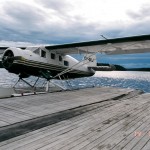
Norseman
Any history of AMEs in Canada would not be complete without mentioning the AMEs working in the bush. The bush definition covers all the outlying country of Canada north of the traditional settlement area. Canadians refer to any forested area of the country as, “The Bush”. This would include the northern east coast, northern Ontario and Quebec, the northern parts of the prairies and British Columbia as well as the three territories.
Aircraft and their attending AMEs opened up most of Canada. The only other mode of transport to compare with aircraft would be the canoe, which allowed first nations travelers and traders to travel all over Canada in summer. The first European settlers and traders quickly picked this up. Aircraft had the advantage of being all season and quicker. They could also pass over many areas of difficult terrain, mountains, swamps and large lakes.
The following is quoted from Voyageurs of the Air:
“As flying machines evolved, the importance of aircraft maintenance engineers
Evolved as well. In Canada such legendary flyers as Punch Dickens and Grant
McConachie were really enabled to make many of their famous “bush pilot”
firsts because of actual support from Air Engineers such as Lew Parmenter and Limey Green. Often these Air Engineers flew with the aircraft to be able to provide the constant mechanical support to keep the aeroplanes functioning.
There are several anecdotal accounts of where these Air Engineers provided innovative and very creative solutions to broken aircraft and to other extreme mechanical problems experienced while flying, particularly in the frozen north.
Elmer Fullerton, while attempting an historical flight from Edmonton to Inuvik in 1921, crashed his aircraft at Fort Simpson, “crumpling the undercarriage, shattering the propeller and demolishing one wing.” (18) By cannibalizing another aircraft, which had been marooned at the settlement a few months before, one of the aircraft engineers on board, William Hill, was able to repair the aircraft but not resolve the problem of the shattered propeller. Not to be undaunted, Hill utilized oak sleigh board materials from the local Hudson Bay Company store and glue made from boiled moose hides to make one propeller and to glue the other one back together. Eight days were required to complete this task and the propellers proved to be fully satisfactory. In the meantime, Elmer Fullerton and his junior mechanic, Pete Derbyshire, had overhauled one of the damaged engines. Through the persistence and skills of these early aircraft engineers, the airplane was able to return to Peace River, some 500 miles to the south, where a full restoration with more complete repairs and better equipment could be obtained. (19)
In January 1929, while on an airmail test flight, Punch Dickens and his Air Engineer, Lew Parmenter, had an accident while landing in Fort Resolution, Northwest Territory. They struck a snow ridge, buckling the undercarriage and bending the propeller. The Catholic Mission provided a piece of water pipe to repair the undercarriage but the bent propeller was the real problem. While attempting to straighten it out in 40 below temperatures, it broke about nine inches from the end. Not to be hindered by this turn of events, Lew Parmenter sawed off the other end of the propeller and this gave it enough balance for them to continue with their flight with unapproved repairs. Such practical and innovative thinking on the part of Parmenter was what had really made this flight a success.
Another pioneering Aircraft Engineer was Limey Green. He, too, constantly demonstrated innovative and practical solutions to keep airplanes operative. In the late 1930’s, while flying in the north in a Fokker aircraft with the legendary pilot and later airline executive, Grant McConachie, (20) they landed on a remote lakeshore. Unfortunately, one wheel of the airplane was on ice and the other on sand. The major apparent damage was a large tear in the fabric underbelly. Green carefully sewed it up. They had made this flight to rescue two burned trappers. Once the fabric rip had been repaired they continued their flight to Edmonton. It was only when they had safely landed that they observed they also had a split propeller. Lady Luck had certainly accompanied them on this flight.”
The stories noted above describe some of the challenges of working in the bush. AMEs had to camp out in the wilderness and jury rig machines to be able to conduct maintenance in the field. The bush lore they built up led to the development of industry practices still in use today. They obviously needed to learn how to live off the land. They had to make their tents and cabins as comfortable as possible under the circumstances. They needed to understand how to get water for drinking, and find fuel to cook and keep warm. Hunting and fishing were more than an enjoyment; they were a way to supplement their food source and improve their diet. AMEs working in the field had to be very innovative. Many of their procedures were not in company maintenance manuals, repair schemes, etc. They had to jury rig engine hoists, jigs and make special tools to carry out their work. A good knowledge of metallurgy was needed together with an expert understanding of aircraft structures and engine design. Early AMEs working in the bush also needed to be expert welders and machinists. They had to be able to fabricate from local resources, mainly wood or metal they had carried along.
There are many excellent books available written by early bush pioneer AMEs who go into great detail on describing some incredible aircraft recoveries and maintenance exploits. Some of the stories revolve around the very difficult job of helicopter AMEs changing transmissions and engines in the forest with only homemade wooden tripods; engine changes on the shore, working in frigid water; float repairs quickly completed, but good enough to get one home.

Float Planes – Canada’s Bush Taxis
Even back at home base things could be rudimentary; small cabins to live in and nose hangers to work in. Remember, in those days everything you needed had to be flown in, so rework or recycling was the way of life. Summer had its own set of problems, mainly insects and the diseases caused by them. Winter brought on the extreme challenges to humans and machines caused by the brutal cold weather.
Without AME’s who were prepared to spend a good portion of their lives in the bush, one cannot help but imagine that Canada’s aviation story in the bush would not have been possible. One wonders what motivated them; money? Sometimes, as jobs at times were scarce. More probably the life of adventure appealed to those who liked freedom and working far from supervision, a chance to live off the land, and perhaps a pride in being self sufficient and getting things done.
Post War Air Carriers

Wardair – Canada’s Finest Charter Airline
The airline industry had its beginnings in the 1930’s but it was the advances in aircraft, Air Traffic Control and transoceanic flying developed during the war that made it a later success. Once the Second World War ended many large aircraft pilots and maintenance technicians, were around to use their wartime experience to build Canada’s airlines. Trans Canada Airlines expanded rapidly as well as many others. The role of the AME was vital to this expansion. Many of them rose to positions of management in a rapidly changing airline world.
The first aircraft were piston engine propeller driven varieties of military aircraft. The AME of that day generally had lots of piston engine experience from their Air Force and Navy time. Piston engines were complicated machines and very dirty to work on. They also took a lot of time and manpower. The image of the AME as similar to an auto or farm mechanic came about because of the perception of the dirty work. This was mainly caused by the fact that early machinery used lots of grease, oil and heavy hardware. The oil and grease part also applied to early aircraft, hence the comparison to the more commonly known mechanics. Aircraft systems were starting to become more complex as electronics systems developed during the war came into use. The arrival of more and more electronics together with the use of jet engines in civil aviation airliners completely changed the AME world.
Until the early 1950s, piston engine powered aircraft like the DC-6 and the Constellation continued to be the mainstay of the airlines. These aircraft required the knowledge of piston engines and used the expertise gained by the wartime experience of AMEs working on Lancaster’s, B-17’s, DC-3’s and other common types. This knowledge and experience was readily transferred to the post war airlines. The introduction of the jet powered airliner; the early 707, Comet, and DC-8, brought a requirement for a new body of knowledge. Of course jet engine theory was one of these new areas, but there was also the question of maintaining pressurized hulls and the new field of avionics.
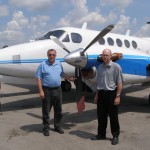
King Air – Workhorse of the small air carrier industry. (left to right) Cliff and Ed of Keystone Air
The Royal Canadian Air Force was still a large training organization and continued to provide the civil market with skilled pilots and technicians. This continued until the early 1970s, by which time many more community colleges were attempting to supply the civilian market. The Air Force decreased in size during the years from 1970 until around 2001. Many had thought the world was a gentler place until the events of September 11, 2001 shocked them back to reality. The Air Force, now RCAF again, went through a phase as the air arm of a unified military, before regaining its old title in 2011. The Air Force never returned to the size it enjoyed in the nineteen sixties, but it still produces much future AMEs. During the intervening time period the community colleges arose to fill civilian AME positions with their graduates.
The arrival of the fast and comfortable jets caused the travel market to take off. People could now return to their home countries in a reasonable time and at an affordable cost. A new form of air carrier arrived, the charter. Soon a large market developed in taking war brides back home for visits, mainly to Great Britain. Another market was the winter vacation trip to warmer countries. So a system soon developed of leisure and business travel which kept the airlines busy for many years. During the seventies some thought deregulation of the economic system, which favored legacy carriers, would make sense and bring more completion into the market. Eventually this had a profound effect on state airlines and some large private operators. In addition there was the growing security problem as aircraft were targeted by various terrorist groups. If that was not enough, the oil and fuel crises began which added more challenges to all air carriers. So by 2013 we have a large worldwide system of very complex and efficient aircraft, airlines and support services. Through all of this the AME has remained.
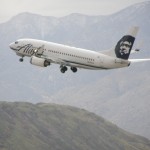
Modern Aviation
So what was life like for the AMEs in the post war air carriers? First one has to accept that it is a 24 hour, 365 day a year operation. This means shift work and working on holidays. Once one accepts the working conditions you will also need to be ready for a heavy training load. This starts from your first day on the job. Normally there is company familiarization, which is what it sounds like; Pay and benefits, The Maintenance Control Manual or today the Safety Management System need to be studied and understood. It also means going to many aircraft type courses and specific equipment courses.
Clothing and protective equipment is arranged as well as your personal tools. The shifts start with a turnover between crews and you are given your work assignments. Whether you are based at the main maintenance base or a line station will determine the kinds of work you will normally get. On a line station it’s mainly arrivals and departures, troubleshooting defects, commonly known as snags, and doing light checks such as A and B checks or some part of phase check. Those at the main base can expect to work on major inspections or in specialist shops such as power plants, avionics, hydraulics, wheels and brakes and so on.
Most of the work requires skill and specific system knowledge built on a firm understanding of theory of flight, electronics, metals and engines and systems such as hydraulics, pressurization, electrical and chemicals. Most AMEs and technicians develop their strongest skills in areas they are particularly interested in, and sometimes simply by where they gain the most experience. So you will find some, who are excellent trouble shooters but not fine metal workers, just as an example.
Smart and experienced crew chiefs soon come to understand that, and assign personnel accordingly. I personally preferred the line work and operations, over shop work. Others I have met over the years preferred the steady and more predictable indoor work of the shops. You need all types of AMEs to make the system work.
There is some danger and hardship to the work as well. You are frequently in rough weather and working in confined spaces or at heights. You also need to be alert to the dangers presented by engine exhaust blast, being ingested into jet engines, high pressure hydraulics and gases, and electrical hazards. Not to mention the heavy ramp traffic of aircraft and vehicles of all types. It took me several months to get comfortable around the ramp and learn to be constantly aware of the environment to avoid being injured or killed.
The Great AME licence Debates and Changes

Roger, an AME salvaging
The 1950s was a time of great change for many AMEs and technicians. The training and experience many of the senior AMEs was no longer so effective in maintaining the new jet aircraft. Nothing changed in a hurry, because many piston engine aircraft soldiered on for many years. In fact there are still large piston engine aircraft in service today, 2008. The new emphasis though, was on the complex jet systems and on avionics. One of the issues I believe airline management had to face was that electronics education requires a good foundation in science and mathematics, which some of the older AMEs did not have. These lead many organizations to create a new trade, avionics.
That led to many interesting and fractious debates in the 1970s and 1980s, until Justice Dubin addressed the matter of licensing Avionics Technicians in his famous report on aviation safety. This subject matter will be dealt with in the chapter on AME s and Transport Canada. The world did not end for the classically trained AMEs. They were the senior people and remained so for years. Their experience in managing and leading technicians served them and the industry well for many years. However, the workload dramatically shifted from crews heavy on engine fitters and riggers, to crews that included many more specialists like avionics. The shops continued to be staffed by people who had narrower but more in depth training in such fields as instruments, electrical equipment, etc. This continues today. So as the composition of the crews changed, so did the work.
On the flight line, more systems troubleshooting became the norm. Some trades who had been considered pampered by not being required to tow or fuel aircraft now had to join in these tasks with the others. The line between job functions blurred. One major negative that affected AME Category A, was that some company management personnel did not really train them or offer training on the new systems but moved that work over to the new avionics specialty. This caused problems which had to be addressed in later years.
The nineteen sixties really brought the issue of how aviation maintenance work in the airlines would be organized and conducted. The steady advances in using electronics to solve mechanical engineering problems continued at a fast pace. Developments in transistor technology and miniaturization of circuitry added to the speed of integrating electronics into aircraft systems. Since many of the older AMEs did not have a lot of mathematical or basic electronics training something had to happen. Companies really weren’t that interested in re-educating older workers. What happened was the advance of the classical instrument, electrical, armament systems type trades into a new trade called Avionics.
This meant that work associated with the overall authority of the basic “A”licence was infringed on for very good reasons, but it was a limiting factor to the “A” license category. This was most apparent in larger airlines who could afford to become more specialized in their trade structure. The military, which had always had sub-trades, was not as quickly affected since they could staff large crews. In addition, military requirements had to account for wartime losses among maintenance crews and rapid deployments to operational areas. The growth of the avionics specialization was not that apparent in business or general aviation. Category “A” or “R” AME’s became more exposed to avionics and tended to be more complete aircraft types. In this they were supported by many small independent avionic maintenance facilities employing avionics technicians.
Flight Engineers

Roger playing pilot or flight engineer!
Small groups of licensed AMEs worked in a sub section of the flight crews, and were called Flight engineers. In my early air carrier days I worked with many of them. They normally were the best and brightest of us AMEs who wanted a flying job. They became very knowledge of all aircraft systems and were a great value in troubleshooting snags. When not flying the Flight Engineers would engage in ground training of both AMEs and pilots. They were eventually forced out of the cockpit by automation. But before that happened, many of the flight engineer positions were filled by a third pilot, which lead to more pilots acquiring systems knowledge and experience. Advancing automation based on computers and electronics soon eliminated them too, and today most transport category aircraft only require two flight crew members. Some of us noticed great differences between the old AME types of Flight engineers and pilot types. For pilots it was a stop on the way to another position as First Officer or Captain. For AMEs it was a prestige job at the top of the career path. They took a real interest in technical issues and were a great help to us. The era started with them being employed on piston engine bombers and transports. After the war they continued in many civil aircraft such as Boeing 707s and other similar types.
The Helicopter AME
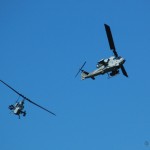
AME’s keep them flying/rotating
I have written this piece on helicopters due to the different challenges met by helicopter AMEs. The machines are very precise and certain cleanliness and balancing activities are very necessary. Helicopter engineers also work under very demanding conditions in remote areas. They also tend to work alone or with only the pilot for assistance. Helicopter pilots and AMEs have a special relationship, due to having to share their work in remote and forbidding areas.
A short review of the history of helicopters is necessary to be able to follow the story of Helicopter AMEs. The first flight was in 1907 made by a Frenchman. He stayed aloft for 20 seconds at height of 0.3 meters, restrained by a tether. The first auto gyro flight was in Spain in 1923. The first totally controllable helicopter was made by FockeWolf in Germany in 1936 which flew at a top speed of 122 KMH. The Sikorsky R-4 achieved mass production in the USA in 1942. The Germans had the first armed helicopters by 1945. In 1946 the Bell Model 47 became the first helicopter certified for civilian use. The vertical flight technology then advanced very rapidly in both the civilian world and the military. By the time of the Vietnam War helicopters were in mass use. They were used as gunships, medical evacuation, scouts, and troop carriers and on and on. The civilian use paralleled that of the military and in remarkable similar roles. By 1968 the Russians had built the world’s largest helicopter the MI-12 Homer, which was bigger than a Boeing 727.
I won’t even try to list all the helicopter firsts as we progressed through the years to 2012. Today helicopters are logging in British Colombia, carrying troops in war zones, acting as flying artillery and providing much needed medical evacuation services. The machine has progressed to the next step a cross between the fixed wing aircraft and the helicopter, the Bell V-22 Osprey which I have had the pleasure of watching at the US marine base in Yuma. So how has this affected AMEs?
My entire aviation career I have been fascinated by helicopters. I have been amazed at the skill required by the pilots who operate them in many challenging and difficult environments, backed up by the skill of the Aircraft Maintenance Engineers and technicians who must cope with demanding maintenance requirements. Military and civilian use helicopters fly in some of the most demanding situations one can imagine. They are found flying in mountains, deserts, in high winds over land and water, operating from ships and oil rigs or from remote and sometimes dangerous bases. As a person with a fixed wing background, the cleanliness and neatness of helicopter maintenance organizations was something to behold.
My first close up encounter with them was at 1 Wing, Marville, France when a Sikorsky caught fire and burned during start up. The crew was safe but all that was left was the engine, an old radial, and main blade tips. This is one thing I never forgot, as it all happened so fast. My next experience with helicopters was in my air force days when I rode out to the Cold Lake weapons range on a Labrador. Again memorable, as we had to set down to drain gasoline from some snowmobiles we were hauling out to the Army. I was with 434 Squadron at that time as part of Mobile Command, in the newly integrated armed forces by the government of the sixties, a big and costly experiment! What a mistake!
I did have the privilege, during my Transport Canada days, of working with many fine Helicopter Flight Test Pilots and Engineers, Aircraft Maintenance Engineers and Technicians. I was also able to work with helicopter manufacturers and approved maintenance organizations. Although I worked with many such people and had many on my staff, the fixed wing issues seemed to dominate the day. The reason is mainly because it is the large and highly visible air carriers, mainly fixed wing, which create the daily regulatory and political issues that need urgent attention. Helicopter associations have worked hard to maintain the visibility of what I have called “The Cinderella” side of aviation. One of the most interesting and educational tasks I had was helping to facilitate the move of Bell Helicopters from Texas to Quebec. This all led to a helicopter familiarization course; a lot on the theory of flight with some very limited flying training.
Helicopter AME Development
Most early helicopter technicians had their start in the military. At one time all three services operated helicopters in Canada and overseas. A few long time friends of mine had their start in the army, others in the navy and air force. Today I believe all helicopters in the Canadian armed forces are operated by Air Force personnel. It was not long before community colleges had both helicopter flight and maintenance training departments, and today most technicians come from that source.
There was a time before the current M1 and M2 category AME licensing system that we had an independent “R “category. In my opinion the “R” category license served us well as I found a large difference between fixed wing and rotorcraft work. However, that was the past and today it seems to work well as type training is still required at the approved maintenance organizational level. I recently was able to visit a certified helicopter repair and overhaul organization and witness the number of certified trades employed to rebuild the aircraft.
World History of Helicopters
Leonardo De Vinci is generally credited with the first helicopter concept and picture of a possible design. Personally, I think the Manitoba Maple seeds are probably the first as they appear to fly like a helicopter; or maybe the dragonfly was. Anyway, back to the serious stuff. The French and Russians early in the 20th century experimented with helicopters as did the Germans. The French flew a helicopter for a few seconds in 1907. Many technical challenges were faced by early engineers; one of the most important inventions was the swash plate, which allowed control inputs to be transferred for the fixed pilot’s station to the rotating blades. In 1936 the German FockeWolf FW61 was introduced, and the Germans had functioning helicopters by the end of the Second World War. The victorious allies soon picked Germany clean of all the aeronautical engineers and aircraft prototypes they could find and began serious helicopter design and testing. By the Korean War, helicopters were advanced enough to actively participate. It was the Vietnam War that really brought home to the world the vision of helicopters dominating the battlefield. The use of helicopters in evacuating wounded from the front lines soon carried over into the civilian world for medical evacuations and transfers. They are real time savers and therefore life savers.
The small machines of the post WW II and Korean era soon gave way to much larger aircraft, capable of lifting many tons of supplies and equipment. The use of helicopters to drop supplies in vertically is of great utility in construction, exploration, and war. Now we see the huge Russian machines operating all over the world. Canada has only recently come to the world of helicopter manufacturing, starting big time in the 1980’s when Bell Helicopters moved to Québec and Messerschmitt-Bölkow-Blohm (MBB) to Ontario. Helicopter repair and overhaul has been around for many years as has the manufacture of helicopter components.
Canadian Helicopter History
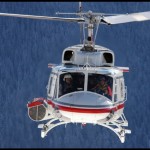
Bell 212
Canadian helicopter history goes back to early experiments shortly after the First World War but few records remain of those experiments that I am aware of. There was some experimentation in British Colombia in the 1930’s and apparently the Royal Canadian Navy flew Sikorsky R4’s at the end of the Second World War. The three Royal Canadian Services, army, air force and navy all independently operated helicopters until unification as the Canadian Armed Services. Some of the types operated were Hilliers, Labradors, and Twin Hueys. Some of the pioneering work done in building Canada’s operators and fleets contained such names as Skyrotors, Okanagan Helicopters, Sealand, and on. One of Canada’s biggest helicopter operators began in BC in 1947. It eventually became Canadian Helicopters and works worldwide.
The introduction of turbine power to helicopters, mainly in the 1970’s, really added to their operational capabilities. Piston engines regardless of how refined were limited in power in comparison to turbines. This increase in power not only permitted larger payloads but also allowed greater electrical generation, heat and air conditioning capabilities. The larger payloads could also be in fuel so that helicopter ranges were greatly expanded. Helicopters have flown many very long range operations in search and rescue and military missions. The additional electrical generation power has also lead to them being fitted with many new systems, one being powerful search lights to use in crime fighting. New structural designs and use of composites has also improved their performance. What is next?
Canada’s helicopter industry today, both civil and military, is an exciting and dynamic place to be involved. In the military new helicopters are arriving, both heavy lift and maritime types. Canadian helicopters are armed and in use in Afghanistan. Although helicopters served in NATO in Europe during the Cold War, I do not think Canadian armed helicopters have been used before in war like they are today in Afghanistan.
In the civilian world, helicopters are increasingly being used in police work which adds to the traditional uses in rescue, heli-skiing, fire fighting, wild life surveys, surveying and resource exploration .Community colleges are busy training future AMEs and technicians and pilots. The air force is also working hard to recruit and train helicopter personnel. Transport Canada continues to employ helicopter experienced personnel in many areas especially in the air carrier and maintenance inspection fields. The Canadian Aviation Maintenance Council is certifying personnel and identifying the sector maintenance technician needs for now and the future.
As I write this, many types of helicopters are passing over my winter home in Arizona which just goes to show how vital they have become to the modern world. Cinderella has come of age and helicopters can be found everywhere and have become rather indispensable. This should assure a good future for Canadian helicopter AMEs and technicians.
The Military and AMEs
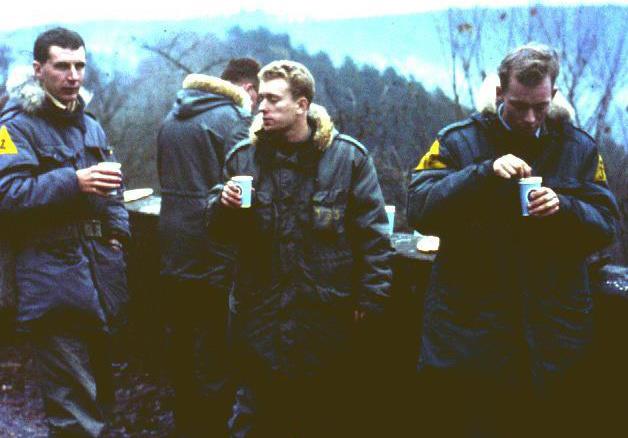
RCAF AME’s at work. (left to right) Roger, Wynn and Johnny
The Canadian Armed Forces and the former, Army aviation, naval aviation and the Royal Canadian Air Force (RCAF) always had some form of certified trades in the aircraft maintenance fields. Military maintenance trades were a great source for the civilian industry but they went different ways in the training and licensing of them. The military, for all services, had needed to sort out how they would assign trades in a military system of rank. Civilians had to be organized in a system which depended on personal freedom to operate, yet maintain standards. This is not to say that operational freedom was not needed by trades in the military under certain circumstances, but for them it was not the driving force it was in civilian operations.
Early military commanders in some services, mainly in the British Empire, decided that pilots were most closely aligned with the officer ranks rather than enlisted ranks. Some have said this came about because when captured officers received better treatment, others believe it came from the fact the first pilots were British nobles and it would not do to have a gentleman serving as a corporal, for example. As I stated earlier not all services did that, and some enlisted ranks were used for pilots. Since maintainers did a lot of hard physical work in the early days it was an obvious choice to assign then to enlisted ranks, as the working man? This is not to say Officers did not work hard flying, but in addition they had to assume the management duties of the force, not a minor task. A further effect was that to attract and keep professional engineers they were offered commissions in the officer ranks. So was set in place a system which has been in effect for over 100 years but recently has been somewhat modified.
So why talk about this in book on civilian AMEs? Well, for the first 75 years of aviation maintenance history most of the trade’s people came from military training systems and services, foreign and domestic. This approach affected AMEs in Canada for many years. When I joined Transport Canada in 1975 the person in charge of AME Licensing and training was a Chief with a pilot’s background. Some AMEs were employed in his division at lower rank levels, a mirror of the military. To his credit he said to me that this was not right anymore and transferred AME matters to me as Chief of Maintenance and Manufacturing.
Military needs during the first 90 years of the Twentieth Century were two fold — have lots of qualified technicians available; and be able to quickly train more. This lead directly to a very rich and complicated trade system of many separate categories, such as armourer, electrician, instrument technician, power plant, airframe, NDT and on and on. Then they had to deal with the rank issue and command and control. So Sergeants and above normally came from either the power plant or airframe stream until electrics became a large part of aircraft. By the time I joined the RCAF in the early 1960’s, technicians were beginning to cross train and be used more effectively.
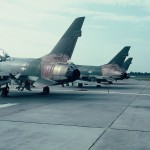
USAF F-100’s at RCAF Base in Europe (1965)
For example as an “Avionics” type I also towed, started, fuelled, etc, this had not been done before as a common practice. In fairness to the military system designers, they also had to consider wartime wastage and replacement. It is much faster to train someone for a slice of the technical work rather than to maintain an entire aircraft. However, by the 1980’s it was realized modern war will fought with the people and equipment in place. The days of training 100,000 pilots or 200,000 technicians are gone. A war today is likely to be short and intense except for the grind of counter terrorism or as it is called asymmetrical warfare. The challenge for modern military aviation was to mimic the best points of the civilian AME system while maintaining the things still of value to the military. Such as rank and its inherent command and control structure while getting more operational freedom and using less maintenance personnel per aircraft.
Certainly during my time as the Chief, Maintenance and Manufacturing, in Transport Canada, we were carrying on detailed discussions with the Air Force regarding training and certification. The Air Force was also interested in being able to offer retiring service personnel the ability to easily transition into civilian work. They became very heavily involved in the Canadian Aviation Maintenance Council formation and were a strong sustaining member. They also participated actively in school curriculum development and basic discussions around AME licensing content. They were never really able to get their trade structure down to the few we find in civil aviation, but have come very close to this model.
Civilian aviation owes much to the military, especially in the first 90 years. They provided most of the training and personnel to allow the civilian sector to grow. We could also go on about the development of aviation technology, but that is really for another author and book.
The relationship of the Air Force Aeronautical Engineers in working with Air Force maintainers had stayed the same, for the most part. The Engineering staffs are mostly officers and hold P. Eng qualifications and exercise a command position. This is different in the civilian world as AMEs operate more autonomously, often engaging the services of Professional Engineers holding Transport Canada Ministerial delegation because of the need to have major modifications and designs approved by Professional Aeronautical Engineers.
Today military AME equivalents are serving in many of the world’s trouble spots. They are dealing with the same sort of pressures their civilian counterparts deal with, weather, heat, cold ,lack of parts, sometimes rough working conditions and ever present danger especially in today’s asymmetrical warfare situations. A major effort has been made to facilitative military maintenance technicians’ transition to civil aviation when they leave the military. This works to the benefit of both parties, although military career managers may see it as one way trip with civilian industry benefiting the most. However, one can argue that skilled technicians are a national resource wherever they employed.
General Aviation
I am using the term ‘general aviation’ in the American sense of business and light aircraft use, including amateur and homebuilt, balloons, and other non transport category aircraft. In Canada the general aviation AMEs form a large part of the bedrock of aviation maintenance in that they maintain some 27,000 or more light aircraft under difficult financial working conditions. The light aircraft used in flight training schools, small air charters and air operators, provide reasonable working conditions. Some of the small fixed base operations who provide maintenance to many owner/operators have also built substantial faculties.
The following comes from a Director of Maintenance in a forty aircraft general aviation operation and describes the type of person who makes a good small aircraft AME. “I would agree that the GA AME is a well rounded jack of all trades. It seems to be the pre-requisite for this kind of job
and throughout my hiring career it is a position that is terribly hard to fill especially when it comes down to the apprentice positions. One has to be a quick learner and have a previous mechanical background which eases the understanding faster of all the various systems GA aircraft have. We tend to look to hire individuals that list small engine mechanics such as lawn mowers, snowmobile and motorcycle experience. Even better than that is a guy who has worked on the farm before, those individuals usually have good mechanical background and learn faster than those who do not. “In the past they would have become AMEs through only an apprenticeship, largely unstructured, today they all come from the Community College AME programs and follow a more structured apprenticeship”.
The main difference between AMEs in large operations and in the General Aviation field seems to me to lie in the greater responsibilities for immediate knowledge of all the aircraft systems and of many types of aircraft. The general aviation AME is certainly an independent individual who operates without all the back-up that large systems provide. They also share many working conditions with bush and helicopter AMEs as many of their hangers and workplaces are small and can be cold or hot as the seasons change. In other cases they operate from modern facilities on major airports. The field is vast and diversified.
General aviation AMEs are seen to be jacks of all trades. That is they are competent trouble shooters, sheet metal and engine technicians. To work on light aircraft one has to be multi skilled in all aspects of aircraft work. This is because the General Aviation owners and operators do not have the depth of facilities to rely on. They do depend on the manufacturers and network of independent suppliers. However, to be successful in maintaining light aircraft one needs to accomplish most work in house.
In the next chapter I will deal with the many interesting challenges I faced when responsible for licensing AMEs and regulating manufacturing and maintenance in Canada.